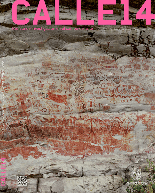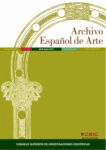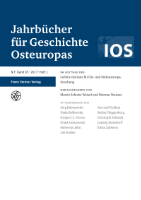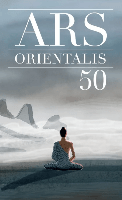
ArtCultura-Revista de Historia Cultura e Arte
Scope & Guideline
Promoting Visibility for Latin American Art and Culture.
Introduction
Aims and Scopes
- Interdisciplinary Studies:
The journal promotes interdisciplinary approaches, combining insights from history, literature, sociology, and the arts to analyze cultural expressions and their implications. - Focus on Latin American Culture:
A significant emphasis is placed on Latin American cultural contexts, exploring themes such as nationalism, identity, and the impact of political regimes on artistic production. - Critical Engagement with Heritage:
The journal encourages critical examinations of cultural heritage, including discussions on memory, preservation, and the role of art in shaping collective identities. - Exploration of Contemporary Issues:
It addresses contemporary cultural issues, including censorship, media influence, and the evolution of popular music, reflecting on their historical roots and societal impacts. - Art and Politics:
The relationship between art and political movements is a recurring theme, with articles analyzing how artistic expressions respond to and influence political climates.
Trending and Emerging
- Intermediality and Cross-Disciplinary Connections:
There is a growing interest in the intermediality of art forms, with studies exploring the interplay between different media such as music, visual arts, and literature. This trend highlights the fluidity of cultural expressions in contemporary society. - Cultural Memory and Trauma:
Recent articles emphasize the exploration of cultural memory, particularly in relation to trauma and collective identity. This theme is increasingly relevant in discussions surrounding historical injustices and their artistic representations. - Sociopolitical Contexts of Artistic Production:
An increasing number of publications are examining the sociopolitical contexts that shape artistic production, particularly in relation to authoritarian regimes and resistance movements in Latin America. - Digital Humanities and New Media:
The journal is starting to incorporate discussions around digital humanities and the impact of new media on cultural production, reflecting broader trends in academia towards technology's role in the arts. - Decolonial Perspectives:
There is an emerging focus on decolonial perspectives in cultural studies, critiquing traditional narratives and exploring the contributions of marginalized groups in shaping cultural discourse.
Declining or Waning
- Traditional Historical Narratives:
There is a noticeable decline in papers focusing solely on conventional historical narratives without critical engagement. The journal appears to be moving towards more innovative and interdisciplinary approaches. - Static Cultural Analyses:
Themes that involve static representations of culture without contextual or critical analysis are becoming less common, indicating a shift towards more dynamic and interactive interpretations of culture. - Eurocentric Perspectives:
Papers that primarily focus on European cultural perspectives, especially those that do not engage with Latin American contexts, have diminished, reflecting the journal's commitment to highlighting underrepresented voices.
Similar Journals

LATIN AMERICAN RESEARCH REVIEW
Exploring the rich tapestry of Latin American cultures and histories.LATIN AMERICAN RESEARCH REVIEW, published by Cambridge University Press, is a premier open-access journal dedicated to advancing scholarship in the field of Latin American studies. Established in 1970, the journal has consistently evolved to address critical interdisciplinary issues, encompassing a broad spectrum of topics from anthropology and cultural studies to economics and political science. With its strong impact reflected in 2023's quartile rankings, including Q1 in both Cultural Studies and History, LATIN AMERICAN RESEARCH REVIEW ranks among the top-tier journals in multiple disciplines, capturing the interest of scholars worldwide. This journal not only fosters a deeper understanding of Latin America's diverse cultures, histories, and socioeconomic landscapes but also serves as a vital platform for innovative research and discussions. By offering open access since 2017, it ensures that its valuable contributions are widely disseminated, making it an indispensable resource for researchers, professionals, and students alike who are looking to engage with contemporary Latin American issues.

Anales de Historia del Arte
Exploring the Rich Tapestry of Art HistoryAnales de Historia del Arte is a distinguished open-access journal published by Univ Complutense De Madrid, focusing on the diverse fields of art history, visual arts, and performing arts. Since its inception in 2005, this journal has provided a platform for scholars and researchers to disseminate original research, critical reviews, and theoretical discussions that enhance the understanding of artistic developments throughout history. Located in Madrid, Spain, and embracing a global perspective, it plays a crucial role in fostering dialogue within the arts and humanities sectors. The journal is currently categorized in the Q4 quartiles of its respective fields according to Scopus metrics, ranking among approximately 15-25% of publications within the arts and humanities domains as of 2023. Researchers and academics can take advantage of the open-access model, allowing for wider dissemination of knowledge and enhancing the accessibility of critical discourse in art history. Explore Anales de Historia del Arte for its significant contributions to emerging trends and established research in the arts.

Calle 14-Revista de investigacion en el Campo del Arte
Bridging Cultures Through Innovative Art ScholarshipCalle 14-Revista de Investigación en el Campo del Arte is an esteemed academic journal published by UNIV DISTRITAL FRANCISCO JOSE DE CALDAS, FAC ARTES ASAB, dedicated to advancing research in the vibrant and diverse field of the arts. Since its inception in 2007, this Open Access journal has provided a platform for scholars, practitioners, and students alike to engage with contemporary issues, methodologies, and innovations within artistic practice and theory. With an ISSN of 2011-3757 and an E-ISSN of 2145-0706, Calle 14 aims to foster interdisciplinary dialogue and encourages submissions that explore the intersection of art with culture, technology, and society. Despite the absence of an H-index, its commitment to accessibility and quality makes it a crucial resource for those seeking to deepen their understanding of artistic inquiry and its impact on the world today. Located in Bogotá, Colombia, Calle 14 is positioned at the crossroads of local and global artistic conversations, inviting contributions that reflect a range of voices and perspectives.

ARCHIVO ESPANOL DE ARTE
Unlocking the World of Art ResearchARCHIVO ESPANOL DE ARTE is a distinguished journal dedicated to the exploration and dissemination of research in the fields of visual arts and performing arts. Published by CONSEJO SUPERIOR INVESTIGACIONES CIENTIFICAS-CSIC in Spain, this journal has been an open access publication since 1996, facilitating unrestricted access to valuable scholarly content for researchers, professionals, and students alike. With an E-ISSN of 1988-8511 and a commitment to covering a range of artistic phenomena, it plays a significant role in advancing the understanding and appreciation of art within both academic and cultural contexts. Although currently categorized in the Q4 quartile within its discipline, its ranking within Scopus—at #400/667, placing it in the 40th percentile—reflects its contributions to the broader discourse in art research. The journal's suite of open access offerings ensures that cutting-edge research remains accessible, fostering collaboration and innovation in the ever-evolving landscape of the arts.

Cuadernos de Musica Artes Visuales y Artes Escenicas
Bridging Disciplines: Where Music Meets Visual and Performing ArtsCuadernos de Musica Artes Visuales y Artes Escenicas is an esteemed academic journal published by the PONTIFICIA UNIV JAVERIANA, FAC ARTES in Colombia. With a dedicated focus on the dynamic interplay between music, visual arts, and performing arts, this journal serves as a pivotal resource for researchers, professionals, and students engaged in these vibrant disciplines. The journal boasts impressive category quartiles, ranking Q2 in Linguistics and Language, Q2 in Music, and Q1 in Visual Arts and Performing Arts as of 2023, reflecting its growing influence and recognition in the academic community. With a commitment to open scholarly communication, Cuadernos fosters innovative research and critical dialogue among practitioners and scholars. The journal's international perspectives and comprehensive analyses help shape contemporary discourse, making it an essential platform for advancing knowledge in these fields. For contributors and readers alike, it represents a valuable opportunity to engage with emerging trends and influential works from across the globe.

Zbornik Matice Srpske za Likovne Umetnosti-Matica Srpska Journal for Fine Arts
Advancing Scholarship in Fine Arts and Cultural DialogueZbornik Matice Srpske za Likovne Umetnosti-Matica Srpska Journal for Fine Arts is a prestigious academic journal published by Matica Srpska, dedicated to the study and exploration of fine arts in Serbia and beyond. With the ISSN 0352-6844, this journal serves as a vital platform for researchers, professionals, and students engaged in the visual arts, fostering a rich dialogue on artistic practices, theory, and history. Although currently not an open access publication, it provides invaluable insights into the artistic developments within the Serbian cultural landscape. The journal's commitment to high-quality scholarship is essential in advancing the study of fine arts, ensuring that the contributions reflect the evolving dynamics of artistic expression and cultural heritage. Whether you are a seasoned scholar or an emerging artist, Zbornik Matice Srpske za Likovne Umetnosti invites you to engage with its rigorous research and to contribute to an ever-growing body of knowledge in the realm of fine arts.

JAHRBUCHER FUR GESCHICHTE OSTEUROPAS
Exploring the Rich Tapestry of Eastern European HistoryJAHRBUCHER FUR GESCHICHTE OSTEUROPAS, published by FRANZ STEINER VERLAG GMBH, is a prominent academic journal dedicated to the exploration of Eastern European history. With its inception dating back to 1978, this journal has consistently provided a platform for scholarly discourse, contributing significantly to the understanding of the region's complex historical narratives. While the journal is not open access, it holds a solid reputation within the academic community, positioned in the Q4 quartile in history as per the 2023 category rankings, and stands at Rank #1636 within the Scopus Arts and Humanities History ranking. The convergence of its publication years throughout the decades emphasizes a long-standing commitment to historical research, thereby making it an essential resource for researchers, professionals, and students interested in Eastern European studies. Explore the intricate dynamics of historical events and cultural developments that shape Eastern Europe through this invaluable periodical.

SituArte
Fostering Critical Discourse in Latin American CultureSituArte is an esteemed academic journal published by UNIV ZULIA-VENEZUELA, focusing on the interdisciplinary fields of art, culture, and social sciences, particularly within the Latin American context. With its ISSN 1856-7134 and E-ISSN 2542-3231, SituArte endeavors to foster critical discourse and promote innovative research that explores the dynamic interplay between visual culture and societal impacts. Although this journal does not currently offer open access options, it remains a vital resource for researchers, professionals, and students seeking to contribute to the evolving conversations in these disciplines. Situated in Maracaibo, Venezuela, SituArte emphasizes regional perspectives while engaging with global trends, making it an essential platform for disseminating scholarly work that challenges conventional paradigms and enriches the academic community.

Revista Historia-Debates e Tendencias
Bridging Disciplines for a Deeper Understanding of HistoryRevista Historia-Debates e Tendencias is a prestigious academic journal dedicated to the study of historical themes, discourses, and trends in the field of history and social sciences. Published by UNIV PASSO FUNDO, this journal has been a vital resource for scholars and practitioners in Brazil and beyond since it transitioned to an Open Access model in 2007, ensuring that research is freely accessible to all. With its ISSN 1517-2856 and E-ISSN 2238-8885, the journal aims to foster critical discussions and inter-disciplinary dialogues on historical narratives, methodologies, and perspectives. By providing a platform for both emerging and established researchers, it plays an essential role in advancing the field of history while contributing to the global academic community. As a publication that encourages innovative research and scholarly debate, Revista Historia-Debates e Tendencias serves as an indispensable tool for anyone engaged in historical inquiry and analysis.

ARS Orientalis
Advancing Understanding in Archaeology and Cultural StudiesARS Orientalis is a distinguished academic journal published by the Smithsonian Institution's Freer Gallery of Art, specializing in the fields of archaeology, cultural studies, and the visual and performing arts. With an ISSN of 0571-1371, this journal contributes significantly to scholarly discourse, having established a robust timeline of publication since its inception, notably from 2001 to 2006, 2010 to 2012, 2014 to 2017, and resuming again from 2022 to 2023. Though currently not open access, it maintains a respectable standing in the academic community with a categorization into Q3 quartiles across several disciplines, highlighting its relevance amid rigorous scholarly evaluation. The journal is particularly valuable for researchers, professionals, and students who seek to explore interdisciplinary connections within its scope. Situated in the United States, it aims to disseminate insightful research that bridges the gap between traditional scholarship and contemporary studies in visual culture and archaeological findings.